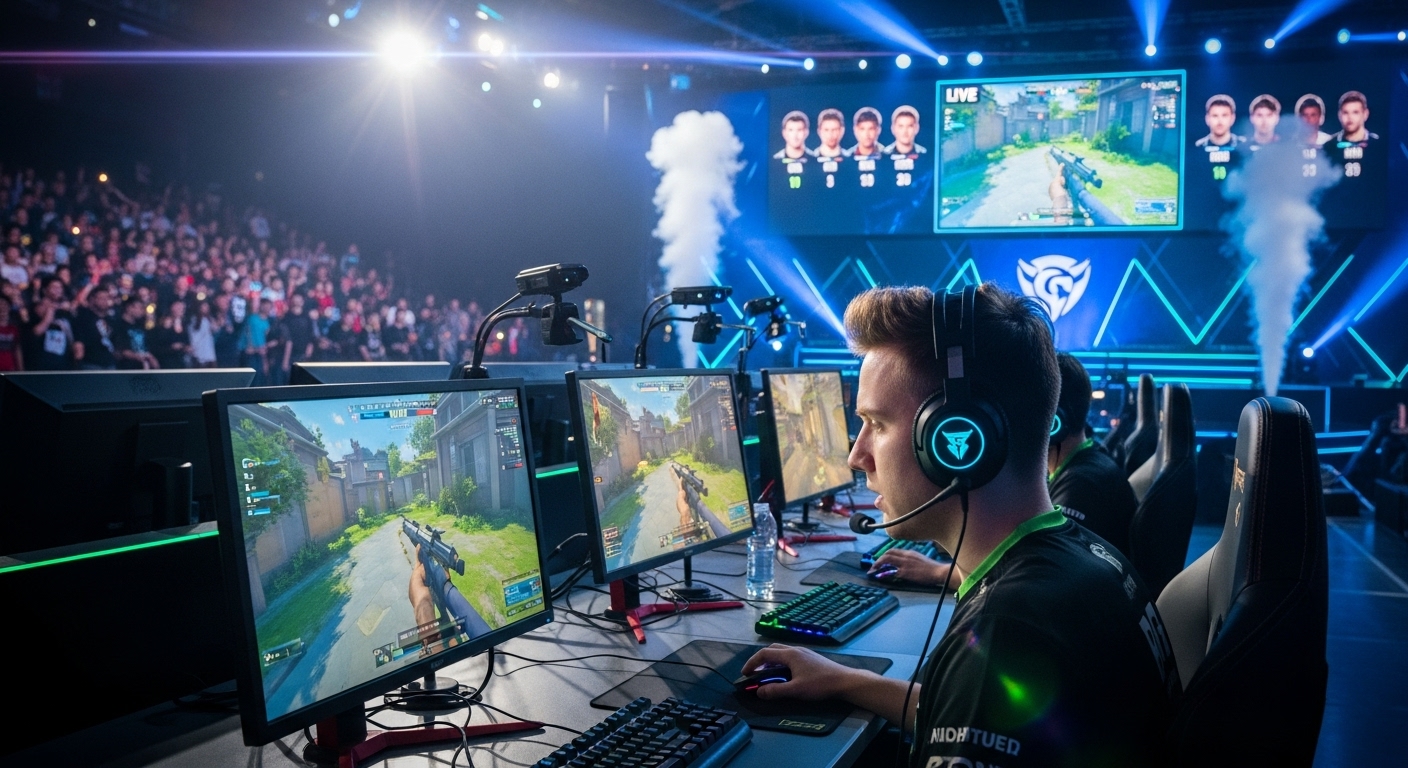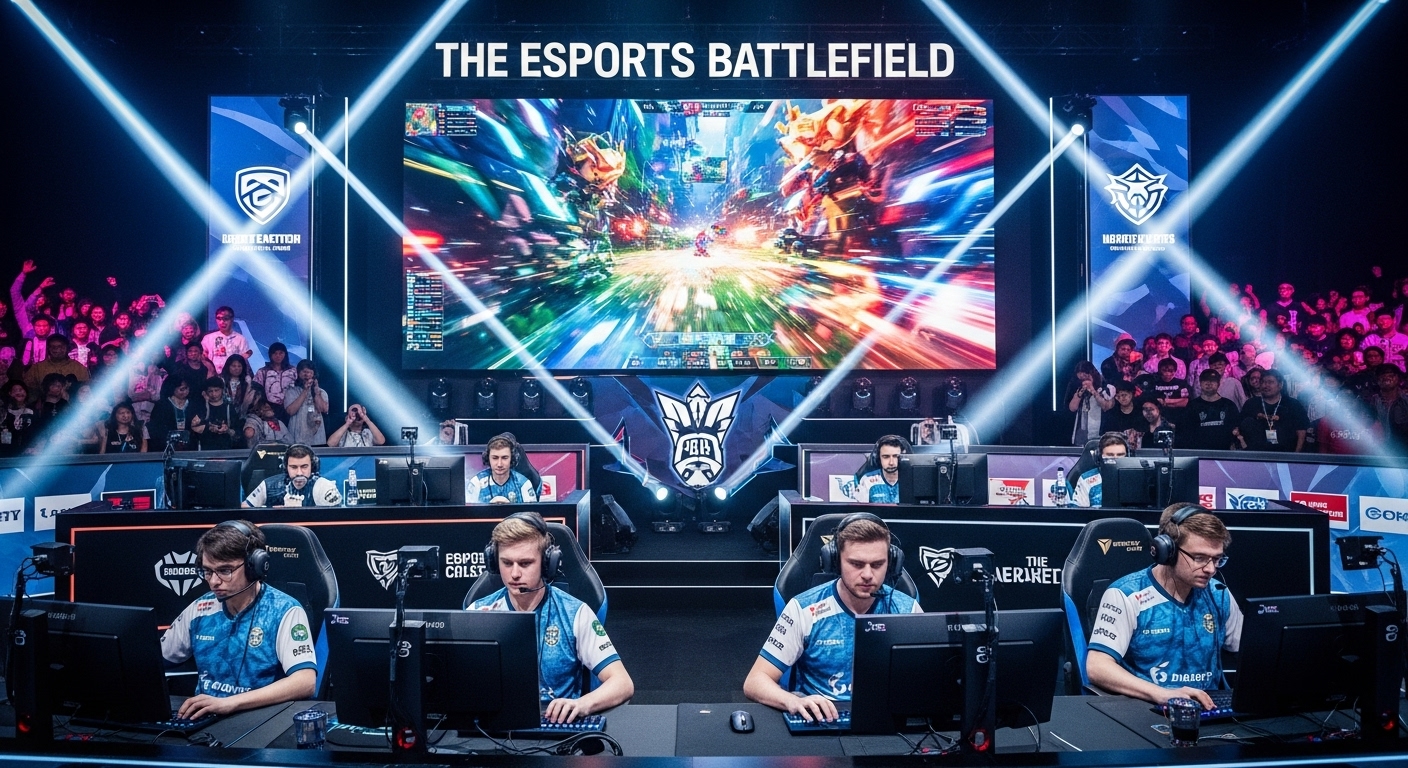Introduction to Esports Franchising
Esports, once an underground scene dominated by small community tournaments and online matches, has evolved into a billion-dollar global industry. With professional teams, sponsors, and massive audiences, the structure of esports organizations has become more sophisticated than ever. One of the biggest shifts in recent years is the rise of esports franchising—a system that mirrors traditional sports leagues like the NBA or NFL.
Esports franchising represents a new phase of professionalism, stability, and long-term investment in the competitive gaming world. Unlike traditional open circuits, where teams rise or fall through performance, franchised leagues grant permanent spots to participating teams. This system is designed to provide financial security, attract sponsors, and ensure consistent competition across seasons. But how did franchising begin in esports, how does it work, and what impact does it have on the ecosystem? Let’s explore these questions in depth.
The Origins of Franchising in Esports
Before franchising, most esports scenes followed an open tournament model. In this model, any team could participate in qualifiers, and success was based purely on skill and results. This open structure made esports exciting and merit-based, but it also created financial instability. Teams could dominate one season and disappear the next if they failed to qualify or secure sponsorships.
Franchising entered the esports world as a solution to these challenges. The first major example came with League of Legends, when Riot Games introduced a franchised system for its North American League Championship Series (LCS) in 2018. This move replaced the promotion and relegation system with permanent franchise slots. The goal was to create stability, attract investment, and ensure that organizations had long-term commitments to their players and the game.
Following Riot’s lead, other major esports titles, such as Overwatch, Call of Duty, and Valorant, adopted similar franchising models. These leagues aimed to replicate the business success of traditional sports, where teams have local identities, loyal fanbases, and guaranteed participation in the league each year.
How Esports Franchising Works
At its core, franchising in esports operates similarly to sports leagues. Game publishers or organizers create a league with a fixed number of teams. These teams pay a buy-in fee to secure a permanent spot in the league. Once accepted, they share in the league’s revenue and enjoy certain benefits such as brand exposure, media deals, and sponsorship opportunities.
Here’s a breakdown of how the system works:
- Buy-In Fees and Ownership
Organizations interested in joining a franchised league must pay a significant entry fee. This fee can range from several million to tens of millions of dollars, depending on the game’s popularity. For example, the buy-in for the Overwatch League was reported to be around $20 million in its early seasons.
These fees are meant to ensure that only serious, well-funded organizations participate, bringing financial stability and professionalism to the league. - Revenue Sharing
Once inside the league, teams share revenue generated from sponsorships, merchandise sales, media rights, and ticket sales. The publisher or league operator typically takes a portion of this income, while the rest is distributed among teams.
This system ensures that all participating organizations benefit financially, even if they do not win tournaments. It also incentivizes collaboration between the publisher and teams to grow the league’s brand. - Permanent Slots
In a franchised model, teams cannot be relegated based on performance. This provides security for organizations, allowing them to plan long-term strategies, build brands, and invest in player development without the constant fear of losing their place in the league. - Geographical Representation
Some franchised leagues, such as the Overwatch League and Call of Duty League, introduced city-based franchises, similar to traditional sports teams. Each team represents a city, building local fanbases and regional pride. This localization strategy aims to attract sponsors and fans from specific markets. - Competitive Integrity and Regulations
Franchised leagues operate under strict rules set by the publisher. These include player contracts, salary minimums, transfer regulations, and competitive standards. The goal is to ensure fair competition, protect players’ rights, and maintain the league’s credibility.
Advantages of Franchising in Esports
Franchising brings several benefits to the esports ecosystem, particularly for organizations, players, and sponsors.
1. Stability and Long-Term Investment
The biggest advantage of franchising is stability. With guaranteed league participation, teams can confidently invest in player development, training facilities, and coaching staff. This leads to a more professional environment and higher-quality competition.
2. Attracting Sponsors and Investors
Sponsors prefer stability. In open circuits, a team might disappear after one bad season, making long-term sponsorship deals risky. Franchised leagues eliminate this uncertainty, allowing brands to form lasting partnerships. The increased professionalism also attracts non-endemic sponsors—companies outside gaming, such as automobile manufacturers and financial institutions.
3. Consistent Viewer Engagement
With a fixed roster of teams, fans can build deeper connections with their favorite organizations. This consistency makes it easier for leagues to develop storylines, rivalries, and narratives that keep audiences engaged season after season.
4. Player Security and Growth
Franchising often comes with minimum salary requirements, health benefits, and contractual protections for players. This shift has improved player welfare, allowing professional gamers to focus on performance without worrying about job security.
5. League-Wide Marketing and Branding
Franchised leagues can invest heavily in centralized marketing campaigns, content creation, and global events. This unified branding helps grow the league’s identity and attracts international audiences.
Disadvantages and Criticisms of Franchising
Despite its many benefits, franchising is not without controversy. Critics argue that it creates barriers to entry, limits competition, and concentrates power in the hands of publishers and large organizations.
1. High Entry Costs
The massive buy-in fees make it nearly impossible for smaller teams to join franchised leagues. This financial barrier limits opportunities for grassroots organizations and reduces the diversity of competition.
2. Lack of Promotion and Relegation
Without a relegation system, underperforming teams remain in the league regardless of results. This can reduce competitiveness and make some matches less exciting. In open circuits, the threat of relegation often motivates teams to perform their best.
3. Publisher Control
Franchised leagues are fully controlled by game publishers, who act as both regulators and beneficiaries. This centralization gives them significant influence over the ecosystem, sometimes leading to conflicts of interest or decisions driven more by profit than competition.
4. Limited Opportunities for New Talent
In open systems, new teams and players can rise quickly through hard work and skill. Franchising can slow this process, as roster spots are limited and controlled by established organizations.
5. Regional Challenges
While city-based franchises were designed to localize esports, building regional fanbases has proven difficult in a digital-first industry. Many fans support teams based on players, not location, which challenges the traditional sports model.
Case Studies of Esports Franchising
League of Legends Championship Series (LCS)
The LCS is one of the most successful franchising examples. Introduced in 2018, it replaced the promotion-relegation format with a stable lineup of ten teams. Riot Games designed the system to improve financial stability and professionalize the North American scene.
The results were mixed but mostly positive. Organizations gained long-term security, players received better contracts, and sponsors increased their investments. However, the league has faced criticism for declining viewership and lack of new team stories, showing that stability can sometimes come at the cost of excitement.
Overwatch League (OWL)
The Overwatch League was one of the most ambitious projects in esports history. Launched in 2018 with a city-based franchise system, it aimed to replicate the structure of traditional sports leagues. Teams represented cities like New York, Seoul, and London, with buy-ins of up to $20 million.
Initially, the league drew global attention and major investments from sports organizations and media companies. However, over time, the high costs and logistical challenges of maintaining city-based teams led to financial strain. Despite these struggles, OWL demonstrated the potential and risks of large-scale franchising.
Call of Duty League (CDL)
Following the OWL model, the Call of Duty League adopted a similar structure with city-based franchises. Teams like the Atlanta FaZe and Dallas Empire became recognizable brands, and the league built a dedicated fanbase. The CDL’s success lies in its passionate community and strong competitive foundation, but like OWL, it has faced challenges with high costs and fluctuating viewership.
The Impact of Franchising on Esports Ecosystem
Franchising has reshaped the business and competitive landscape of esports. It has professionalized operations, improved player welfare, and attracted mainstream sponsors. At the same time, it has made the industry more corporate and less accessible to smaller organizations.
On the positive side, franchising has helped esports gain legitimacy in the eyes of traditional investors and media companies. With standardized rules, player contracts, and financial oversight, franchised leagues are seen as stable and scalable business models. This has led to partnerships with major brands and even collaborations with television networks.
However, many community members argue that franchising distances esports from its grassroots roots. The open, merit-based nature of competitive gaming was one of its defining characteristics. As franchised leagues grow, smaller tournaments and independent teams struggle to gain visibility.
The long-term impact of franchising depends on how publishers balance stability with accessibility. Sustainable growth will require integrating open competition through secondary leagues, amateur circuits, or academy systems, ensuring that new talent can still rise to the top.
The Future of Esports Franchising
The future of franchising in esports will likely involve evolution rather than expansion. Publishers and organizers are rethinking their models to address challenges and adapt to the digital nature of esports audiences.
One possible trend is the development of hybrid systems, where franchised leagues coexist with open qualifiers. This approach allows for both stability and merit-based entry, keeping the competitive spirit alive.
Another key factor is global accessibility. As esports continues to grow internationally, franchised leagues must cater to fans worldwide, not just in specific regions. Digital events, virtual fan engagement, and international tournaments will play major roles in keeping audiences connected.
Additionally, publishers are learning that sustainable franchising requires flexibility. The rigid city-based model may give way to regional or digital franchises that better fit the online ecosystem.
Conclusion
Esports franchising marks a major milestone in the evolution of competitive gaming. By introducing structure, stability, and financial security, franchised leagues have elevated esports to a new level of professionalism. Players benefit from better contracts, organizations gain long-term stability, and sponsors enjoy reliable exposure.
However, franchising also comes with challenges—high entry costs, limited competition, and reduced accessibility for smaller teams. To ensure long-term success, publishers and organizers must strike a balance between stability and inclusivity, preserving the competitive spirit that defines esports.
The story of esports franchising is still being written. As the industry matures, lessons from early franchised leagues will guide future decisions. Whether through hybrid systems, global expansion, or digital innovation, the ultimate goal remains the same: to create a sustainable ecosystem where players, teams, and fans can thrive together.



